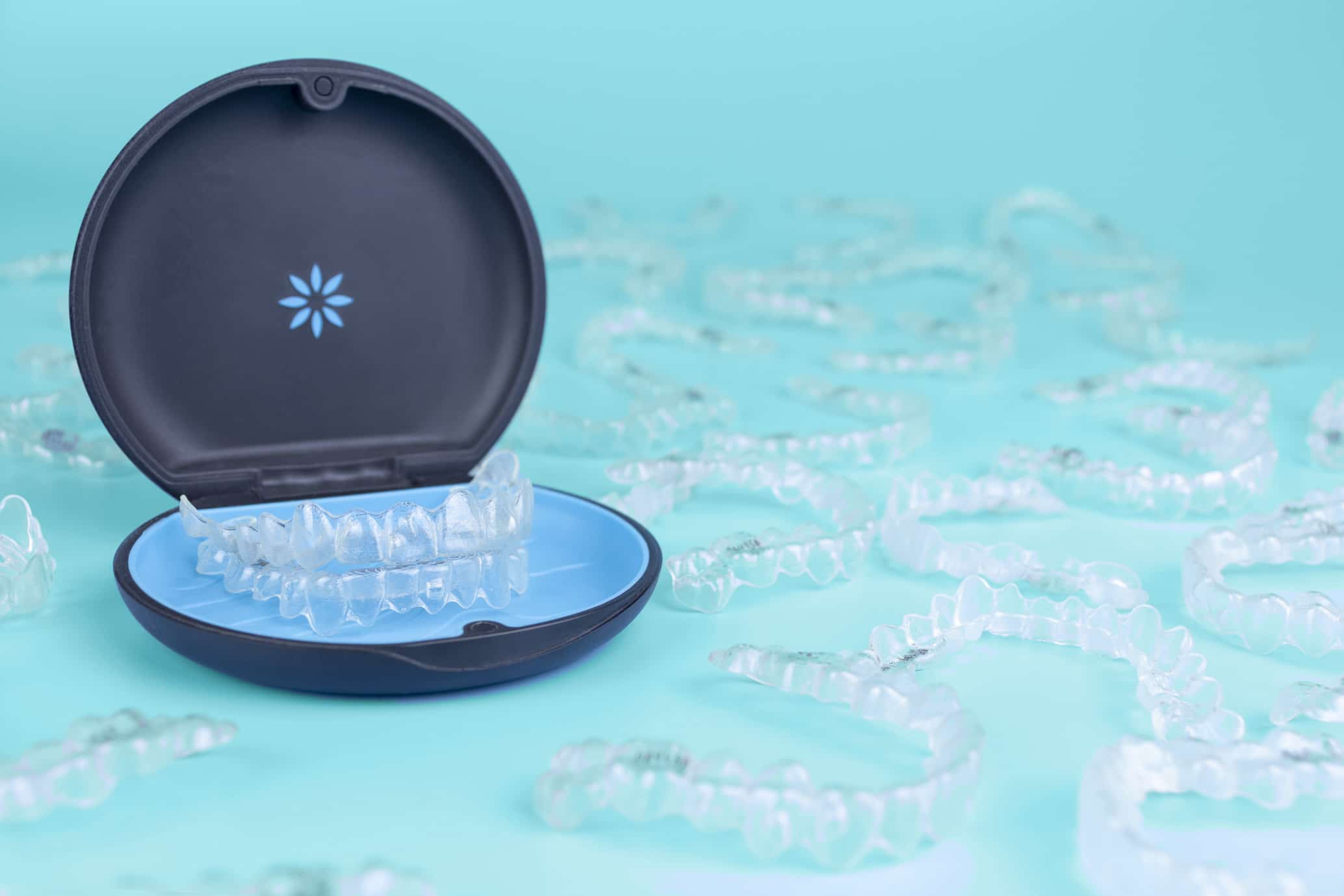INVISALIGN VS. BRACES
Which is best for you?
Are you looking to straighten your smile but unsure if braces or Invisalign is the way to go? Then you’re in the right place! Today we’ll be comparing these two forms of orthodontic treatments side by side, so you have an idea of what’s most suitable for your unique smile.
Of course, it’s also important to work with your orthodontist to determine the best plan of action. Given their years of experience and professional expertise on the matter, orthodontists can better understand which treatment will give you the smile of your dreams.
The original form of orthodontic treatment is traditional braces. Over the years, braces have developed immensely and proven time and time again that they’re a reliable and effective way to achieve a healthy bite and beautifully straight teeth. By utilizing brackets that are bonded to each tooth and connected to a metal wire, each bracket carefully moves each tooth to its correct position.
A newer form of orthodontic treatment is Invisalign. Invisalign uses a series of transparent aligners that are custom-made from digital impressions of your mouth. During the treatment, there are various aligners that are switched out every two weeks as your teeth begin to shift. Invisalign is an effective way to straighten your smile in a discreet and comfortable way.

Scroll to view the full breakdown
| BRACES | VS. | INVISALIGN |
|---|---|---|
| Brackets are bonded to the teeth making cleaning more challenging. |
Cleaning Difficulty | Removable trays make it easier to clean teeth. |
| Great for more complex dental cases. | Cases | Great for complex cases with an experienced Invisalign provider. |
| Regular cleaning and orthodontic visits. Floss with specialized floss threader and avoid certain foods. |
Maintenance | Wear 22 hours a day. Remove for meals and brush thoroughly before putting trays back in. |
| Appointments every 10-12 weeks. Usually around 30 minutes in length. |
Orthodontic Visits + Length of Visits | Appointments every 12-16 weeks. Usually around 15-20 minutes in length. |
| Kids & teens | Ideal Treatment for | Adults, working professionals, and responsible teens. |
| Important. | Patient Compliance | Crucial. Patients must have self-discipline and wear aligners 22 hours per day. |
| Possibility for poking wires or loose brackets during treatment. | Emergency Visits | Rare. |
| • Effective for very severe or complex cases • Permanent bonding means consistent progress • Colorful rubber bands • Multiple braces types • Time-tested reliability |
Pros of Treatment | • Discreet, nearly-invisible look • Removable aligners = easy to care for • No food restrictions • Professional look for working adults • Comfortable and easy to wear • No metal to irritate gums |
| • Noticeable metal appliance (clear options are available) • Food restrictions • Can trap bacteria • Can be uncomfortable/cause irritation in mouth • May be difficult to clean |
Cons of Treatment | • Must remember to wear aligners 22 hours a day • Must remove before eating/drinking anything but water • Aligners can stain or discolor |
Are you interested in learning more about braces vs. Invisalign? Our team at Tasios Orthodontics is always here to help. We want to make sure you get the best care possible AND the smile of your dreams. Simply use the button below to schedule your consultation with us today!
Q&A
Is Invisalign or Braces Faster?
When comparing the two treatments, Invisalign is usually faster. This is because most Invisalign cases can be completed in 12-18 months – some extremely mild cases can take only 6 months. Braces are more often used for complex cases that will take longer to perfect. However, it’s important to note that treatment lengths always depend on each patient’s specific case. Your orthodontist will be able to determine the exact length of treatment for your unique situation.
Do Braces or Invisalign Hurt More?
Most patients can agree that braces are more uncomfortable than Invisalign. This is due to the metal brackets and wire that can sometimes poke a patient. However, there are multiple ways to reduce pain in which your orthodontist will offer. Patients with Invisalign may feel some slight pain due to the pressure of starting a new tray every two weeks. However, most get used to the feeling after a few days. In both cases, the pain is tolerable and can be relieved with cold compresses and over-the-counter pain medication. The beautiful results are always worth it!
What are the Different Food Restrictions for Braces vs. Invisalign?
There are no food restrictions for Invisalign treatment due to the fact that the various aligners are removable! Patients must, however, brush their teeth after eating or drinking anything other than water. This is crucial to keep the aligners clean. Braces do have a few food restrictions, including popcorn, beef jerky, potato chips, gum, hard candies, chewy candies, corn on the cob, and apples. Brackets can be damaged by these foods, which is why it’s important to avoid them as best as you can.
